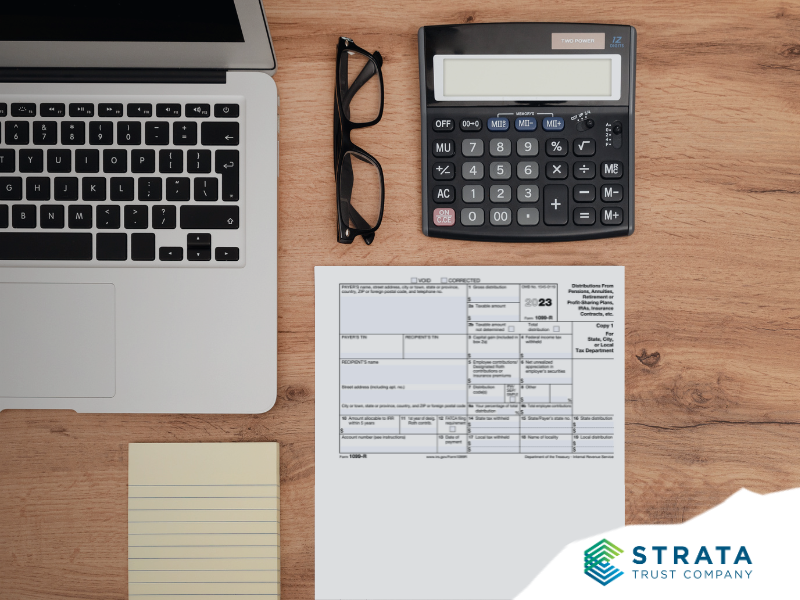My response to your message was blocked for potentially violating safety policies. I apologize for any inconvenience.
2023 IRA Distribution Reporting: IRS Form 1099-R

If you took a distribution from your self-directed IRA (SDIRA) in 2023, you will receive an important tax form toward the start of 2024. IRS Form 1099-R, Distributions From Pensions, Annuities, Retirement or Profit-Sharing Plans, IRAs, Insurance Contracts, etc. is similar to IRS Form W-2, except that it reports your IRA distributions to the IRS instead of reporting your wages. But the concept is the same—the IRS wants to make sure that you pay any tax that you may be required to pay on your IRA distributions.
It’s not always the case that receiving a 1099-R indicates you owe taxes. For instance, it wouldn’t be a taxable event if you took an IRA distribution and rolled it over within 60 days. The IRS will match your return with additional reports that reflect the amount you rolled over if you just inform them that you have rolled over the distribution on your tax return. To prevent any tax surprises later on, it is advised that you discuss any 1099-Rs you receive with your accountant or tax preparer.
How Are IRAs Taxed?
Here are some brief reminders about how your tax is calculated by the IRS using Form 1099-R.
- Conventional IRA distributions, although IRA custodians are unaware of the specifics, are typically required to be reported as taxable income. For instance, you would typically submit Form 8606 to the IRS to report nondeductible contributions you have made to your IRA. (IRA custodians cannot track such contributions. Such after-tax contributions are not taxable when withdrawn if you distribute them.
- Generally speaking, distributions from a Roth IRA are not counted against your income unless you make a nonqualified distribution from your account. IRA holders are required to monitor the distribution of taxable earnings.
- Distributions from taxable IRAs may be subject to an additional 2010 early distribution penalty if you are under the age of 2059 C2%BD and do not meet the requirements for a penalty exception. For additional details, see our post on how to avoid the early distribution tax.
IRA 101: Traditional IRA Distributions
FAQ
Do I have to report my IRA distributions on my tax return?
Where do you put IRA distribution on 1040?
What IRS form is used to report IRA distributions?
How do I report an IRA distribution on a 1040?
Then, report the total distribution as an IRA distribution on line 15a of Form 1040 or line 11a of Form 1040A, and report the taxable portion on line 15b of Form 1040 or line 11b of Form 1040A.
How do I report a Roth IRA distribution?
Report the entire amount of the Roth IRA distribution as an IRA distribution, regardless of how much, if any, is taxable. If you’re using Form 1040, it goes on line 15a; if using Form 1040A, it goes on line 11a. Calculate the taxable portion of your Roth IRA withdrawal using Form 8606.
How do you calculate IRA distribution taxable?
Report the total amount of the traditional IRA distribution as the taxable amount of your IRA distribution unless you made nondeductible contributions. On Form 1040, it goes on line 15b. If you’re using Form 1040A, report it on line 11b. If you’ve made nondeductible contributions, calculate the taxable portion of the distribution with Form 8606.
How do I report a conversion from a traditional IRA to a Roth IRA?
Conversions from a traditional IRA to a Roth IRA are reported on Form 1099‑R. The distribution code in Box 7 is determined by your age at the time you converted. Recharacterizations from a Roth IRA to a traditional IRA—and vice versa—are reported on 2 different tax forms: Form 1099-R reports the distribution. Form 5498 reports the contribution.
